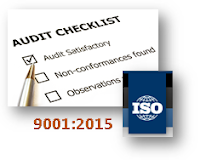How do you prove you meet the requirements of Clause 4.1 of ISO 9001:2015?
The
organization shall determine external and internal issues that are relevant
to its purpose and its strategic direction and that affect its ability to
achieve the intended result(s) of its quality management system.
The
organization shall monitor and review information about these external and
internal issues.
ISO 9001:2015 Cl.4.1
|
Information monitoring and internal and external issues components analysis are carried out in the QMS processes.
1)
‘Marketing’ process.
Information about
external issues includes results of the analysis of
- political and legal issues,
- economic issues,
- demographic issues,
- environmental issues,
- cultural and scientific issues,
- information from consumers,
- information from competitors,
- information from external providers,
- information from contact audiences,
- information from marketing intermediaries.
Information about
internal issues includes results of the analysis of
- corporate level strategy,
- business level strategy,
- functional level strategies,
- adequacy of resources.
Information to understand the context of the organization is a part of ‘Marketing’ report for management review, as well as a part of the database to obtain and maintain organizational knowledge relevant to marketing activity.
2)
‘Control of personnel’ process - information and analysis of the of internal issues components, relevant to the status, tasks and perspectives of the personnel development.
3)
‘Design and development’ process information and analysis of the of internal issues components, relevant to perspective development.
Summarizing of information from QMS processes information (mentioned above) and
general analysis of internal and external issues is carried out in the ‘
Management Review’ process.
The best practice of creation and
transfer of information on internal and external issues is the development of the ‘
Control of organizational knowledge’ QMS process.
Description of activity of monitoring and review of information relevant to the
internal and external issues is given in the corresponding
QMS documented procedures of relevant processes and in the
Quality manual, including section 4.1.
Other
ISO 9001:2015 Documents and Templates




